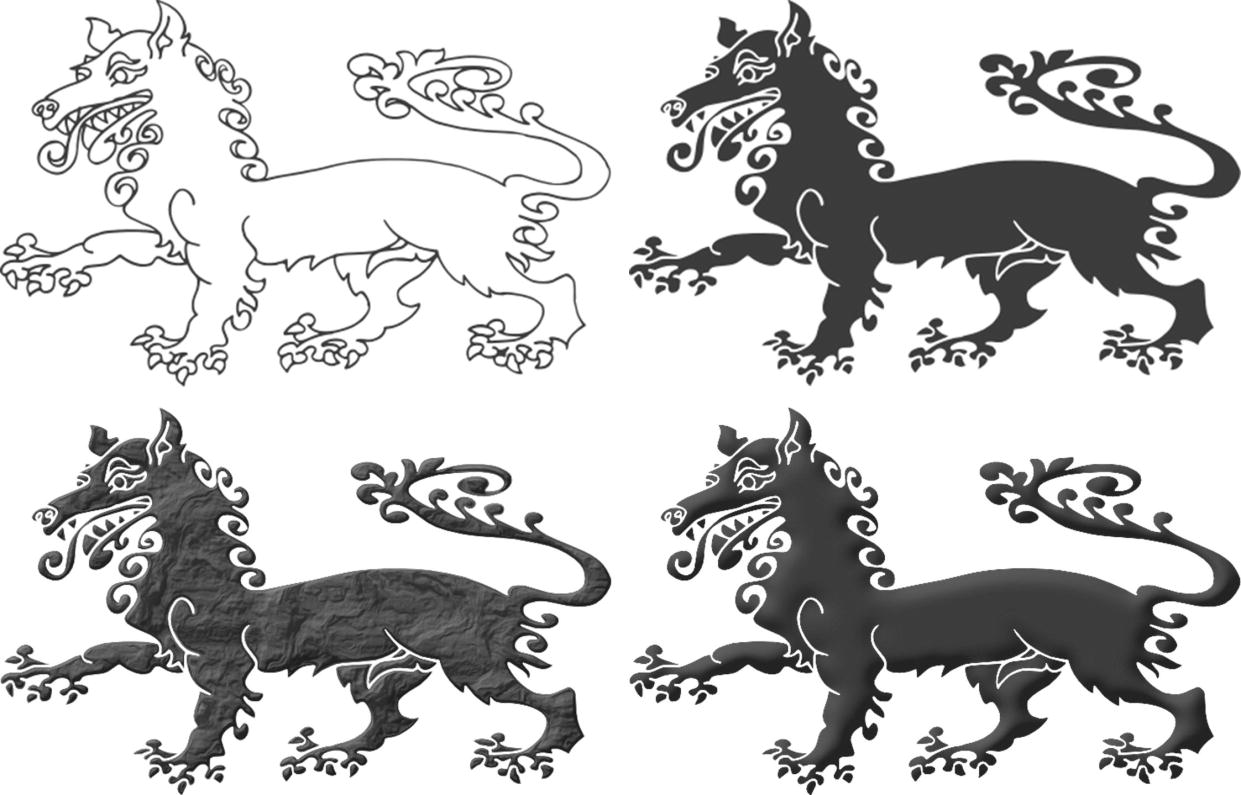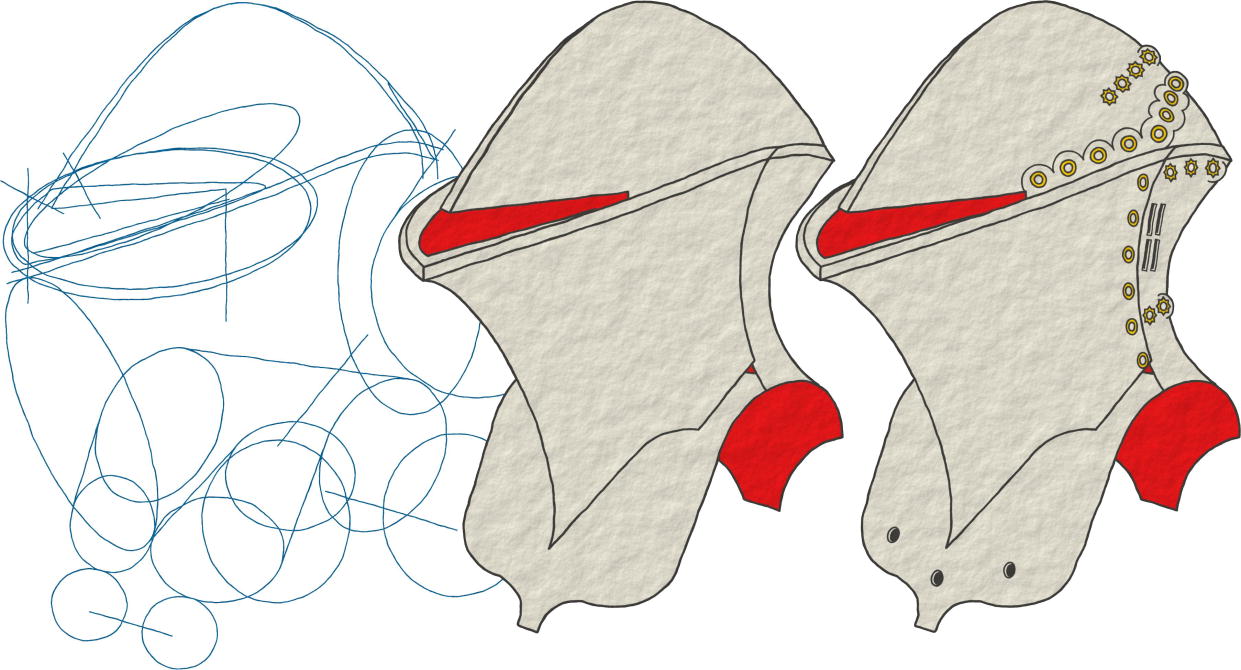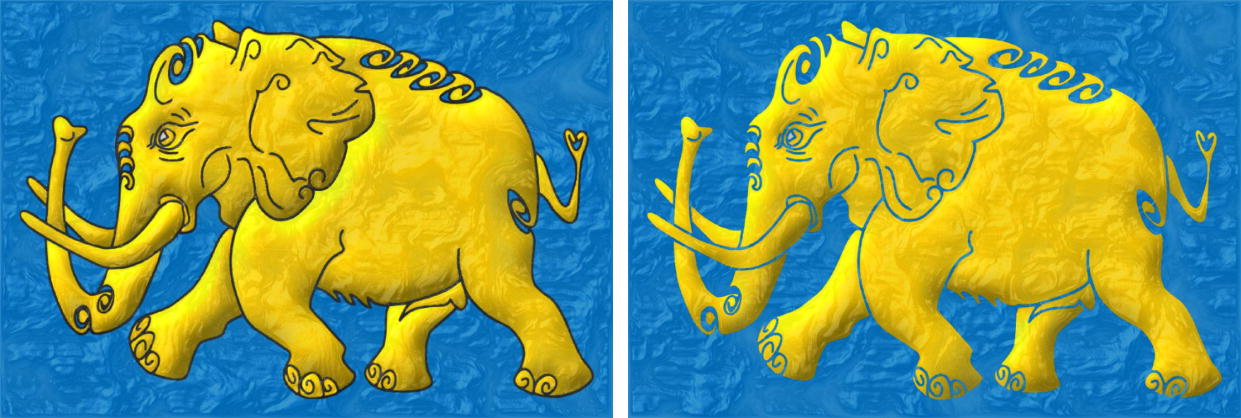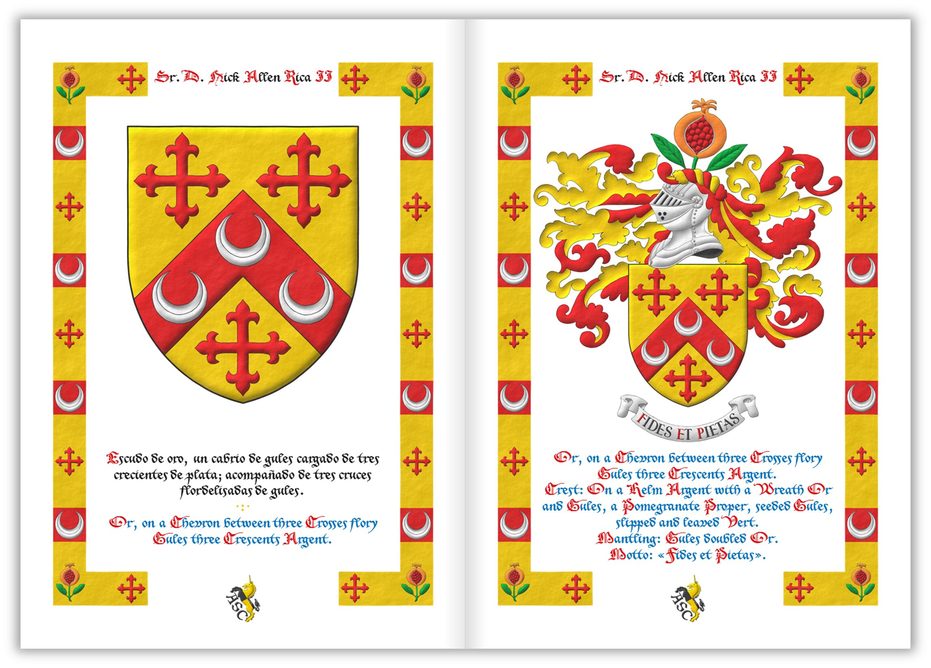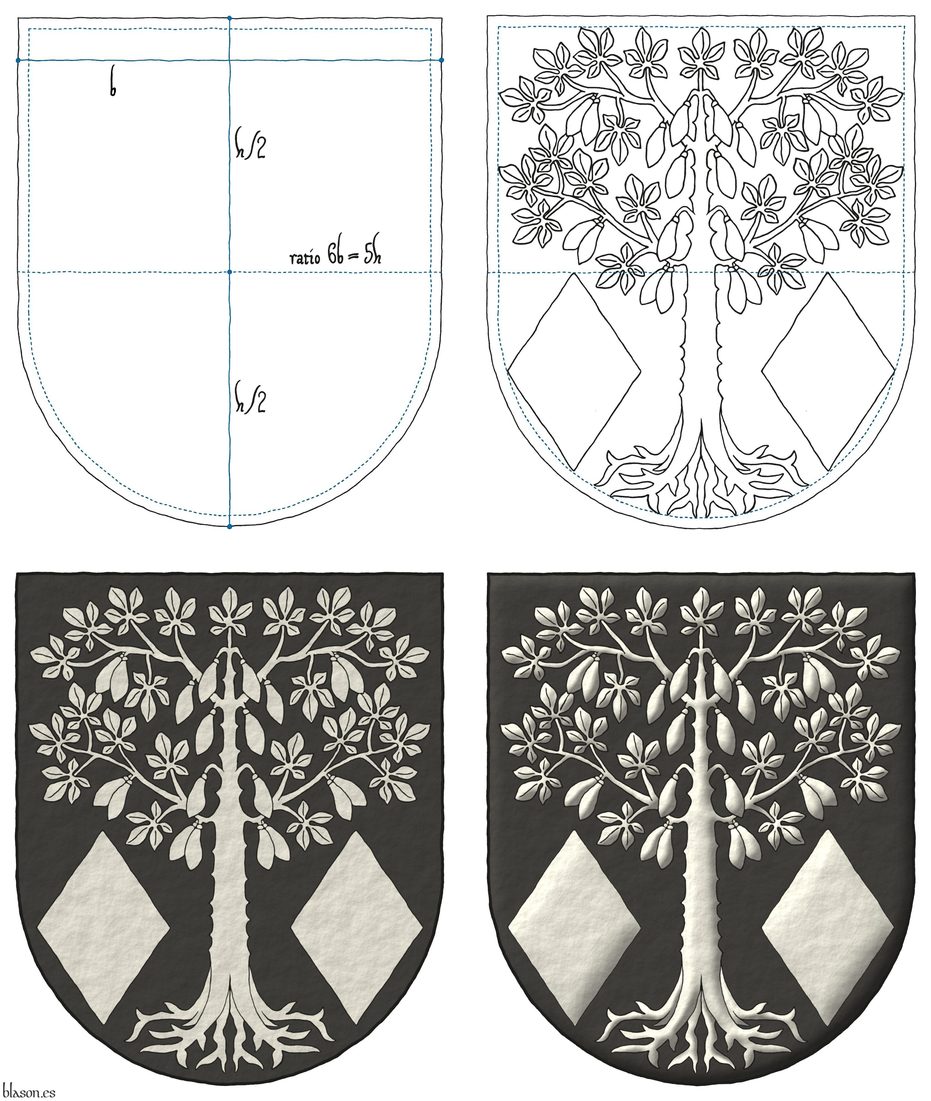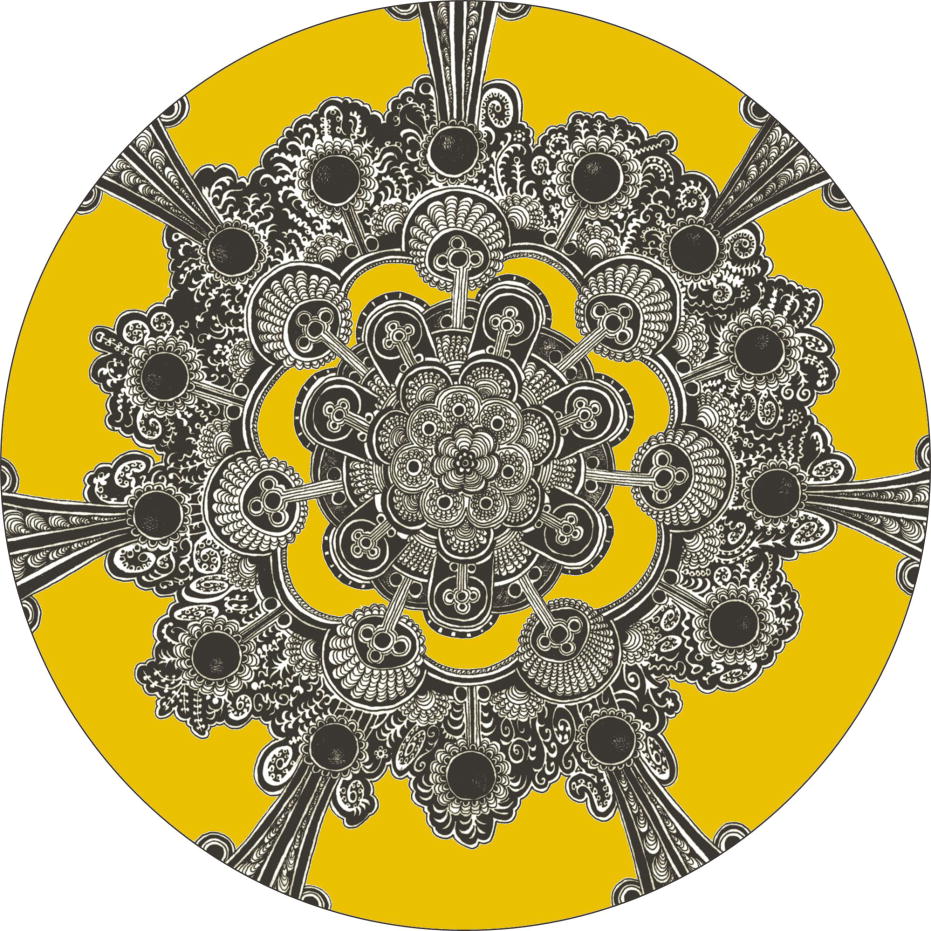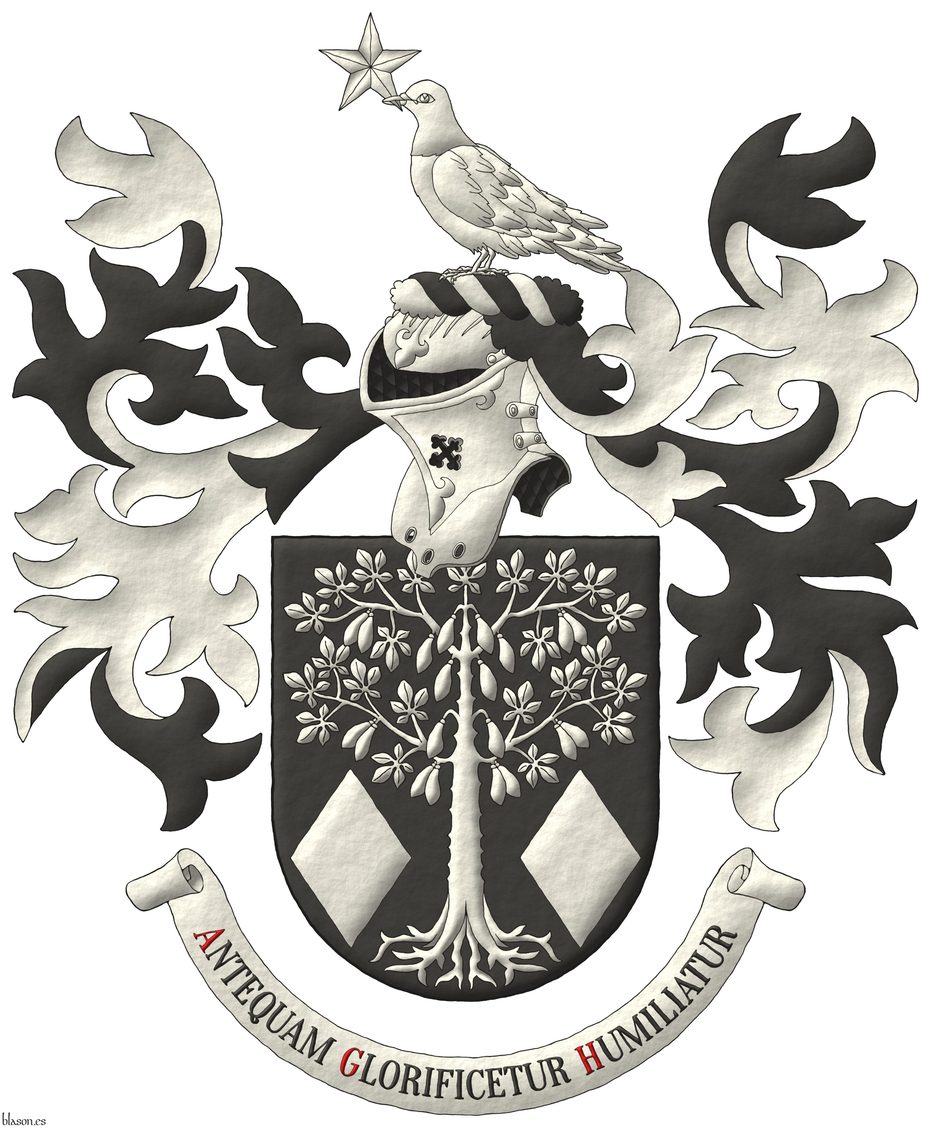Heraldic artist


Artistic style
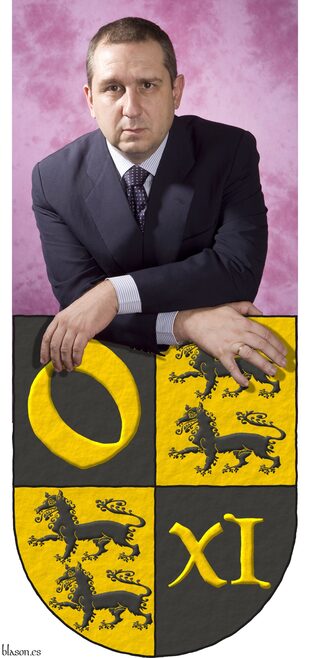
I would describe my heraldic artistry with three terms: clarity, symbolism, and methodology.
- It is clear because my work aims to create pieces that transmit energy and vital force to the owner and their relatives. I believe that a coat of arms should be a source of light and joy and an expression of freedom. That's why, in my heraldic creative process, I prefer drawing inspiration from the early stages of heraldic history to bring that freshness into the present.
- It is symbolic because coats of arms must represent their bearer, his/her ideals, goals, motivations, history, and anything he/she might want to display. Thus, the creation of a coat of arms should encompass all the meanings and symbols brought forth by the future owner, in accordance with heraldic rules and artistic contributions.
- It is methodical because heraldic art is founded on a science, the so-called «science of heraldry». This systematic knowledge has its principles, its composition rules, and its own formal language, all of which are the true foundations of my artistic methodology. The method should not be seen as a deterrent to creativity, but rather as a solid support and a guarantee of professional work.
This brief description of my artistic style is elaborated on in the following series of articles, where I provide a broader insight into my methodology, my artistic techniques, and my journey both artistically and personally.


Artistic technique in Heraldry
My heraldic art is a mixed of techniques that combine the manual realization with the digital process. The reason is that, for each specific creative activity, I try to choose the technique that best suits the goal I intend to achieve.
Drawing freehand
The natural motives are especially suitable to drawing freehand. I go through this job straight with black ink, without previous pencil schemes, with as long as possible ink traces, without lifting the pen, using 0.1 mm thin feathers, making scrolls automatically, without passing twice through the same point with the same movement. This technique comes from the automatic tracing as referred to in the third stage of the article entitled pictorial evolution and influences.
In figures with an eye I always by it and then follow by the right ear, the hair of the head, left ear, neck, back, tail, circulating at the maximum possible speed in the clockwise direction, skirting the figure to the left front leg, where I stop. Then, I do return to the right ear, down to the nose, mouth, tongue, chin, the lower part of the neck, circulating at the maximum possible speed counterclockwise, bordering the figure until the left front leg, where I stopped in the first round.
This tracing technique has the advantage of generating long lines, which seem to circulate freely, but it has the disadvantage of admitting neither mistakes nor retracings. In case of errors, the suitable choice is to finish the figure, to see the final result and be able to detect possible points of special difficulty towards the end of the tracing and right after to trace the whole figure again in a blank sheet, using the previous one as visual support. The reiterated result is to have to follow this process several times up to reaching a satisfactory level of execution. As a curiosity, I've noticed that the 1st figure often contains errors of ink path, the best is usually the 2nd and in some cases the 3rd, but from the 4th on, although there is no longer errors, the result is often more baroque.
Technical outlining
For the tracing of some figures, especially geometric, I use classic technical drawing skills. In this way vair, vairy, divisions, geometric ordinaries, bordures, checkys, etc. are calculated and outlined technically.
In some cases figures that are delineated technically are also hand-touched in order to compare techniques and be able to select the most suitable technique for the ongoing coat of arms.
Tincture of elements
In order to tincture field, ordinaries and charges I always start with plain colors and metals. In fact all my shields always have a version in plain colors. Then I build the volumes by means of lightings and shadows and applying appropriate finishings, by adding and removing hues and texturing surfaces. In some cases I do this process on the whole shield, in other, more laborious way, each field, ordinaries and charge is treated separately. This technique of working on flat base colors for later lighting and texturing follows my previous graphic work on color coated paper, which are described in the first stage of the article entitled pictorial evolution and influences.
In the final stages I try and choose the best of two options as applied to the already tinctured and finished charges:
- Represent them outlined in sable with its original layout.
- Let the tincture of the shield's field give them their final delineation.
Working process
I perform the workflow mainly over sheets size DIN, in vertical orientation, attaching to drawings annotations, metadata, samples of color, etc. I make and archive these DIN forms sequentially as I go through the steps described in the section entitled heraldic creation methodology.
At the end of the work, all of these DIN forms together, make up what could be called a «making-of» of the coat of arms, that is, the history of their creation process.


Completion and fulfillment, a phase with three activities
Heraldic edition:
- Its objective is the definitive edition of the blazon and its explanatory texts illustrated with images of the coat of arms, accompanied by the heraldic objects that complement it and adorned with a specific framework tailored to each registrant.
- Its outcome is a catalog of delivery of the heraldic work stamped, signed, dated and numbered.
Final review and delivery:
- Its goal is a last review of the complete work and to perform the latest appropriate corrections.
- The result is the delivery of the work to its holder, point where the heraldic process end.
Documentation and closure of records:
- Its goal is to finish the internal documentation of the work and the final archival of both the intermediate material and the final result.
- The result is a new record, keyed on the numbering of the heraldic catalog, in a documentary and graphic content management file.


Conception, a phase with three activities
Elicitation and ideation:
- Its objective is to acquire all the signifieds, the ideational components, which must be represented in the blazon as well as the conceptual and symbolic ideation of the shield.
- Its output must be a candidate representation alongside one or more alternative depictions.
Heraldic research and critique:
- Its purpose is to compare the candidate design with the proposed alternatives, first by its heraldic investigation and comparison with other blazons and finally by its esthetic relative estimation.
- The crop will be the documented decision on the chosen design.
Creation of a sketch of the coat of arms:
- The aim is the realization a first exhibit of the translation of the blazon into a shield. The activity includes a delineation of the future ornament with at least the motto.
- The result must be an initial acceptance by the future owner and may be an agreement for a refining cycle going back to any of the previous stages.


Heraldic creation methodology
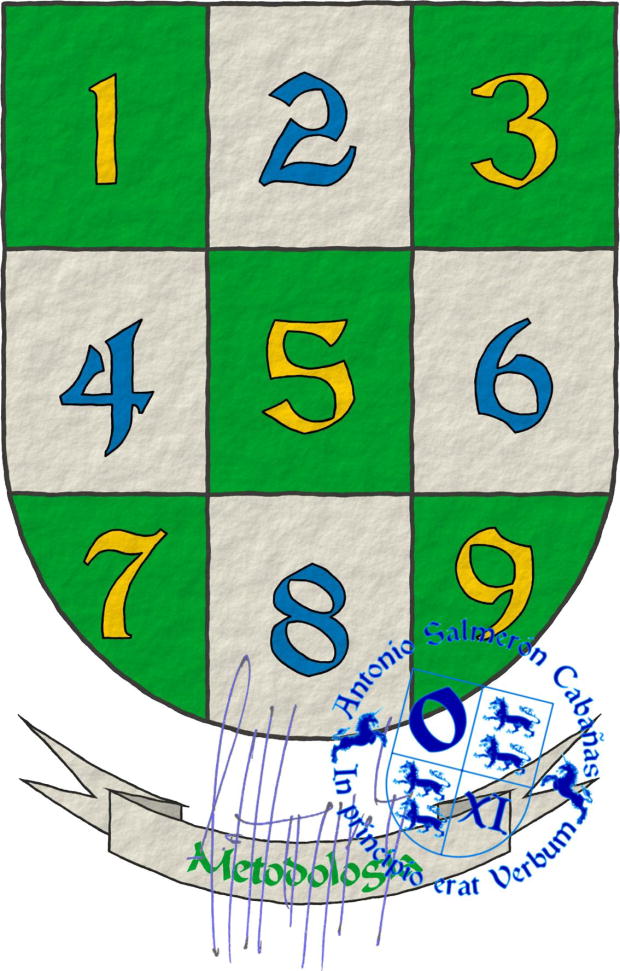
While writing and illustrating «The book of the coat of arms of the Wolves Sable and the Unicorns Argent», I established the foundation for a work process that has now become my signature methodology in heraldic creation. Recognizing the importance of a methodological approach to consistently produce quality artwork, I continue to refine it with the experience I accumulate.
My methodology can be summarized as a 3-phase process, each containing 3 distinct activities, with the flexibility to revisit any phase for continual improvement.
The diligent execution of these nine activities ensures that the final product meets the expectations of the future bearer of the heraldic coat of arms.
The three phases are as follows:
- Conception, which encompasses: elicitation and ideation, heraldic research and critique, creation of a preliminary coat of arms sketch.
- Plastic execution, which includes: layout and tincture application, ornamentation and detailing, lighting effects and final artwork production.
- Completion and fulfillment, which involves: heraldic editing, final review and artwork delivery, documentation and archival closure.


Illustration, translation and editing
I am an editor of both literature and technical books, registered in the ISBN Agency of the Spanish Ministry of Culture. I do also work in translation and illustration of key poetry works. Some examples of this activity are:
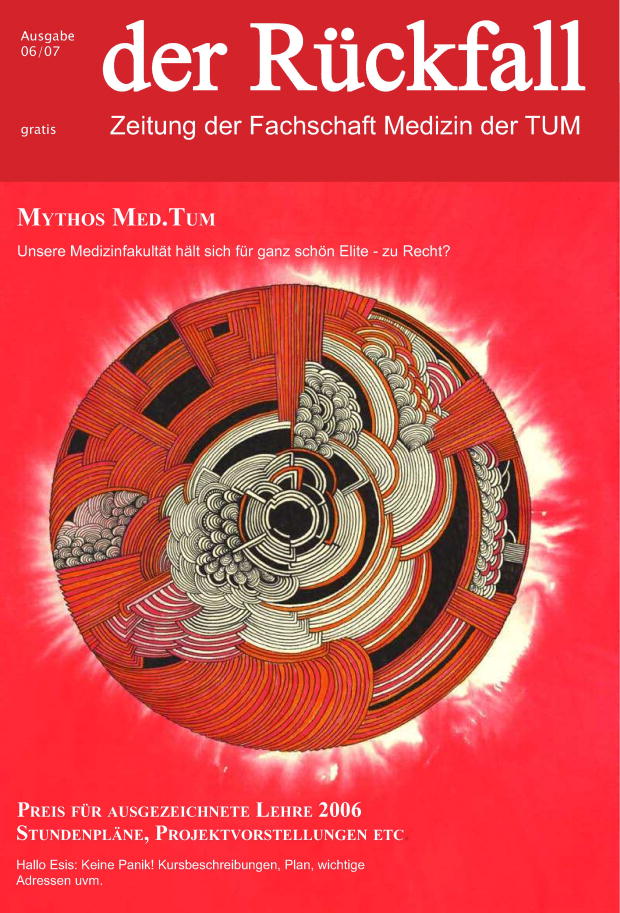
- The illustration of "Les Fleurs du Mal" by Charles Baudelaire. I have done 128 pictures for the poems included in the 1861 edition using a mix of techniques on coated paper, which became a first free French edition. There is an upcoming bilingual edition in French and Spanish.
- Translation of Chinese medieval poetry of the Tang dynasty (centuries VII to X), using a method of translation of Jué jù poems, with metric, but without rhyme, seeking an isomorphism with the original that allows you to associate, using color schemes, each character in classical Chinese with English and its representation and current Chinese pronunciation. These illustrated translations were published in different issues of the Chinese Economy and Society Observatory (OES China).
In addition, I have authored the cover of «der Rückfall» a magazine of the Technische Universität München and illustrations of the opening chapter of the book «Time's Up; Finding Resonance and Relevance in Revelation» by Bill Albing.


Pictorial evolution and influences
My artistic evolution can be classified into three 3 major phases, each of them marked by the influence of a particular school. These three stages, in turn, made their own contributions to my current heraldic production:
- Pop Art: At the beginning of the 1980s, most of my initial work was tuned to the Pop Art. From there comes my interest in the representation of objects, the use of spot and basic colors, the production oriented to its graphic reproduction, the use of mixed techniques and the principles of clarity and cleanliness, so present in my current production. At the end of this stage I start to work on thick, but delicate, coated paper of the base color of the table on which I apply colors and textures by adding elements of color or by the destruction of the base itself.
-
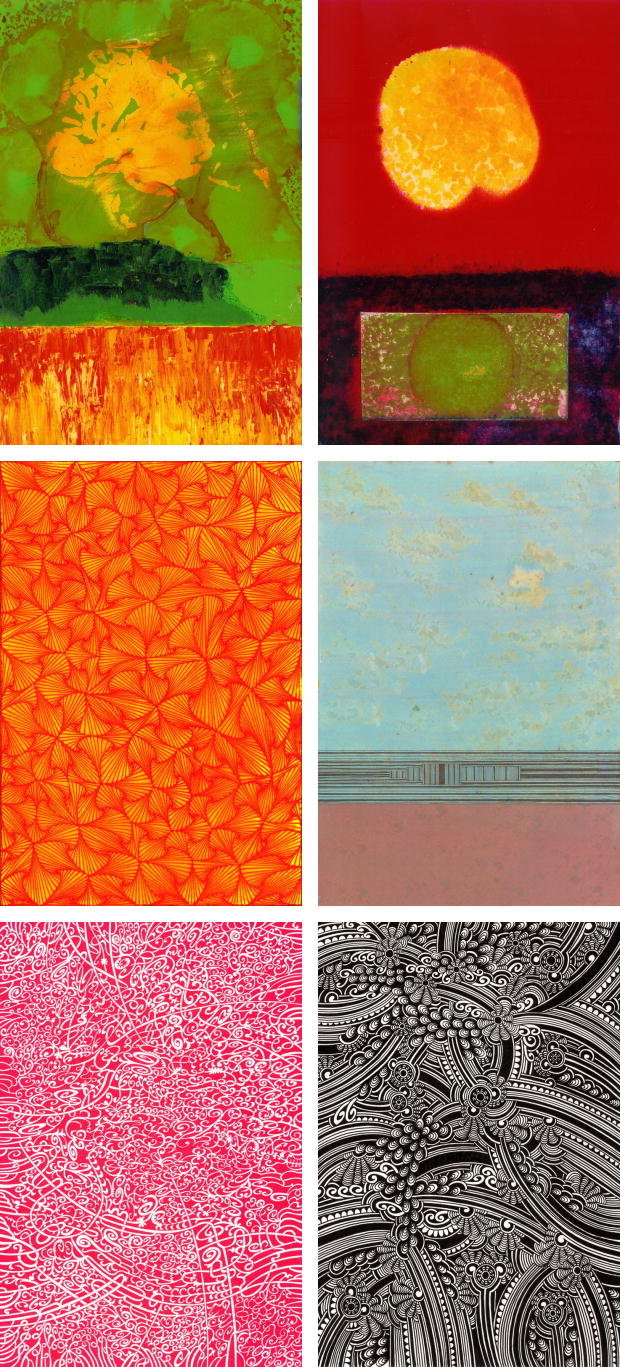 Geometric abstraction and abstract expressionism:
During the 2nd half of the 80's, my art evolves towards geometric
abstraction in the line and to abstract expressionism in the color.
Since then I base my painting in the two-dimensionality of the plane,
the use of simple shapes, in harmonies with or without symmetries or
with apparent symmetries, reinforcing the use of basic colors:
yellow, red, blue, sometimes with white as a neutral background and
black as a delimiter, which is the purest tradition of Heraldry.
Geometric abstraction and abstract expressionism:
During the 2nd half of the 80's, my art evolves towards geometric
abstraction in the line and to abstract expressionism in the color.
Since then I base my painting in the two-dimensionality of the plane,
the use of simple shapes, in harmonies with or without symmetries or
with apparent symmetries, reinforcing the use of basic colors:
yellow, red, blue, sometimes with white as a neutral background and
black as a delimiter, which is the purest tradition of Heraldry.
- Surrealism and symbolism: Both two previous stages converged at the beginning of the 90s with my surreal and symbolic background to produce, during the following two decades, hundreds of automatic painting works in ink and watercolor characterized by a series of personal characteristics. Undoubtedly this evolution marks my current heraldic production. For example, the patterns inside the mantling of my shields are made with the mind of automatic state or the overall assembly of the heraldic work where symbolism is a constant. At this stage I usually use Fabriano paper of 300 grams, usually 100% cotton, liquid ink pens to favor speed, Vallejo (brand) liquid watercolors and, sometimes, as a complement, paste watercolors Winsor & Newton.


Plastic execution, a phase with three activities
Layout and tincture:
- This stage's goal is to draw freehand the ordinaries and charges which will be placed upon the blazon and tincture them in plain colors and metals.
- The result is the definitive coat of arms in plain tincture.
Ornamentation and accompaniment:
- It aims the creation of the ornament and, where appropriate, of their complementary heraldic objects, for example, seal, badget, flag, bookplate, etc., all of them determined by the final composition of the coat of arms.
- Its result is the shield with its ornament and its additions in plain colors and metals.
Lighting and final art:
- Its objective is, depending on the cases, lighting or shading of ordinaries, figures, crest, etc., and give the final finish to the heraldic objects.
- The result is the shield, its ornament and complements finished as plastic work reviewable by the future owner. This could drive to a refining cycle returning to some of the earlier phases.


Studiorum et résumé
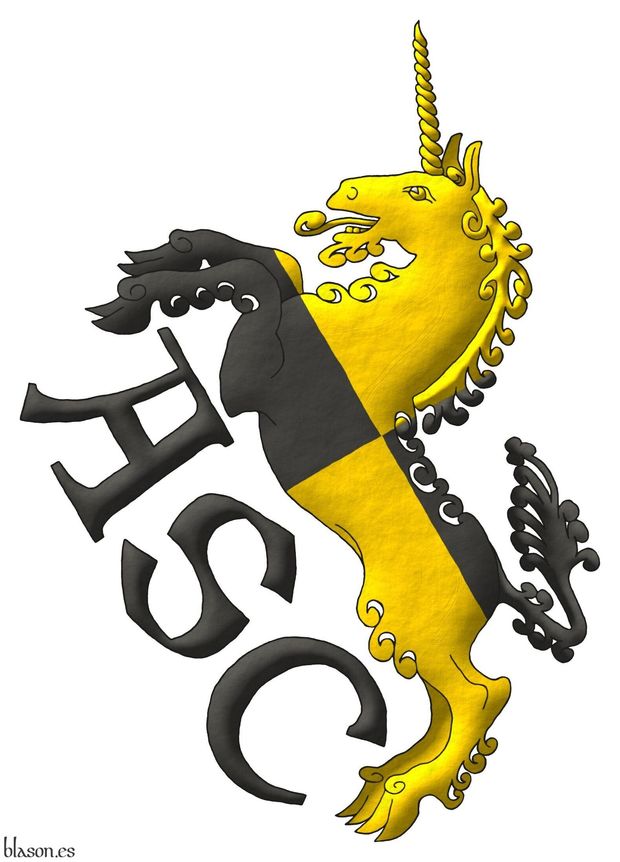
I have the grades of Doctor cum laude and graduate from the Technical University of Madrid (UPM), Master from the IESE Business School at the University of Navarra (UNAV), Specialist by the Department of Private Law at the University of Burgos (UBU) and a Diploma by UCAM Universidad Católica San Antonio of Murcia (Spain), among other qualifications.
As an independent business and technology consultant, I have had the opportunity to work for organizations like Adif, Alcatel, Antena 3, Atari, Aneca, AVPPM, Bank of Spain, Banco Santander, Cecabank, Post and Telegraphs, Coca-Cola, the Spanish Army, El Corte Inglés, National Uranium Company, Forces Elèctriques d'Andorra, National Institute of statistics, Koch Media, Mercadona, Metro de Madrid, Michelin, Microsoft, NCR, Repsol, Schindler Group, Sogecable, Telefónica, Unidad Editorial, etc.
I have had the honour of being a member of the constituent cloister of the Technical University of Madrid (UPM) under democratic rule.
I have collaborated with Miguel Angel Núñez on a project which was awarded a 2nd Prize in Research in Military Psychology of the Spanish Ministry of Defence.
I have been quoted in the research and science paper Investigación y Ciencia (Spanish edition of Scientific American), in the weekly economic paper L’Econòmic, interviewed by ED-Daily Meetings and referenced in the Sigart Bulletin from ACM Press (California), in the Artificial Intelligence directory of Association for the Advancement of Artificial Intelligence (AAAI) (formerly the American Association for Artificial Intelligence), in Madrid I+D (regional administration Research and Development policies agency) and by a:Ditoday (Barcelona).
I have performed public presentations and made publications, among other institutions, at the Enterprise Institute, the Institute of International Research, SAS Institute, the International Federation of Automatic Control, Forecast & Strategy Club, for the Fundación Ortega y Gasset and The Spanish National Research Council (CSIC).
-
Language
-
Categories of heraldry
-
Divisions of the field
- Without divisions
- Party per pale
- Party per fess
- Party per bend
- Party per bend sinister
- Tierce
- Tierce sinister
- Tierced per pale
- Tierced per fess
- Tierced per bend
- Tierced pallwise inverted
- Quarterly
- Quarterly per saltire
- Gyronny
- Party per fess, the chief per pale
- Party per pale, the sinister per fess
- Party per fess, the base per pale
- Party per pale, the dexter per fess
- Chapé
- Chaussé
- Embrassé
- Contre-embrassé
- Party per chevron
- Enté
- Enté en point
- Flanched
-
Metals
-
Colours
-
Furs
-
Other tinctures
-
Ordinaries and sub-ordinaries
-
Diminutives of the ordinaries
-
Geometric charges
-
Composite ordinaries
-
Inanimate charges from Nature
Atom, Crescent, Diamond, Emerald, Estoile, Increscent, Lightning flash, Moon, Mount, Mullet, Mullet of four points, Orbital, Plough of Ursa Major, Rainbow, Ray of the sun, River, Sea, Snowflake, Sun, Sun in splendour, Sun of May, Trimount and Water.
-
Vegetal charges from Nature
Acorn, Apple, Apple tree, Ash, Bluebonnet, Camellia, Chrysanthemum, Cinquefoil, Cornflower, Dogwood flower, Double rose, Elm, Fleur de lis, Flower, Gourd, Holm oak, Hop cone, Kapok tree, Laurel, Lily, Linden, Lotus flower, Madonna lily, Oak, Olive tree, Palm tree, Pomegranate, Poplar leaf, Rose, Shamrock, Sunflower, Thistle, Tree, Tulip, Vine and Wheat.
-
Animal charges from Nature
Badger, Bald eagle, Barbel, Barn owl, Bear, Beaver, Beetle, Bighorn sheep, Blackbird, Boar, Brach hound, Bull, Doe, Dog, Dolphin, Dove, Eagle, Elephant, Falcon, Fish, Flame, Fly, Fox, Frog, Goat, Goldfinch, Goose, Heron, Horse, Hummingbird, Jaguar, Lark, Leopard, Lion, Lion passant, Lion rampant guardant, Lioness, Lynx, Male figure, Martlet, Merino ram, Owl, Panther, Parrot, Peacock, Pelican, Pelican in her piety, Puffin, Quetzal, Raven, Roe deer, Rooster, Savage, Seagull, Serpent, She-wolf, Stag, Starling, Talbot, Tyger, Vulture, Warren hound and Wolf.
-
Parts of natural charges
Arm, Beak, Branch, Caboshed, Chest, Claw, Covert, Dorsal fin, Eagle claw, Ermine spot, Escallop, Feather, Foot (palmiped), Foreleg, Forepaw, Hand, Head, Heart, Hoof, Leaf, Neck, Ostrich feather, Palm frond, Paw, Roe deers' attires, Shoulder, Sprig, Stags' attires, Stem, Swallow-tail, Tail, Tail addorsed, Tail fin, Talon, Tooth, Trunk, Trunk (elephant), Two hands clasped, Two wings in vol, Udder, Wheat spike, Wing and Wrist.
-
Artificial charges
Ace of spades, Anchor, Anvil, Arch, Arm vambraced, Armillary sphere, Arrow, Axe, Bell, Bell tower, Beret, Bonfire, Book, Bookmark, Bow, Bridge, Broken, Buckle, Cannon, Cannon dismounted, Cannon port, Canopy roof, Carbuncle, Castle, Celtic Trinity knot, Chain, Chess rooks, Church, Clarion, Clay pot, Closed book, Club, Comb, Compass rose, Conductor's baton, Cord, Covered cup, Crozier, Crucible, Cuffed, Cup, Cyclamor, Dagger, Double vajra, Drum, Ecclesiastical cap, Fanon, Federschwert, Fleam, Four crescents joined millsailwise, Galician granary, Garb, Gauntlet, Geometric solid, Grenade, Halberd, Hammer, Harp, Host, Hourglass, Key, Key ward, Knight, Knot, Lantern, Letter, Line, Loincloth, Menorah, Millrind, Millstone, Millwheel, Monstrance, Mortar, Mullet of six points pierced, Nail, Non-classic artifact, Norman ship, Number, Oar, Oil lamp, Open book, Page, Pair of scales, Parchment, Pestle, Piano, Pilgrim's staff, Plough share, Polish winged hussar, Port, Portcullis, Potent, Quill, Ribbon, Rosette of acanthus leaves, Sabre, Sackbut, Sail, Scroll, Scythe, Sheaf of tobacco, Ship, Skirt, Spear, Spear's head, Stairway, Star of David, Step, Sword, Symbol, Tetrahedron, Torch, Tower, Trident, Trumpet, Turret, Two-handed sword, Wagon-wheel, Water-bouget, Wheel, Winnowing fan and With a turret.
-
Immaterial charges
Angel, Archangel, Basilisk, Dragon, Dragon's head, Garuda, Golden fleece, Griffin, Heart enflamed, Mermaid, Our Lady of Mercy, Ouroboros, Paschal lamb, Pegasus, Phoenix, Sacred Heart of Jesus, Saint George, Sea-griffin, Trinity, Triton, Unicorn, Winged hand and Wyvern.
-
External elements
-
Heraldic creations
-
References
-
Formats
-
Keywords on this page

